Royal Albert Orphan Asylum / Orphanage, Bagshot, Surrey
The Royal Albert Orphan Asylum was established at a meeting of some gentlemen on February 2nd, 1864. At a second meeting the following month, it was agreed to spend £8,000 on the purchase of a mansion with 200 acres, part of the Collingwood Court estate on the Portsmouth Road to the south-west of Bagshot.
On December 29th, 1864, the Asylum received its first intake which comprised 51 boys and 48 girls. By 1866, there were 160 children in the home. The official opening of the establishment by Queen Victoria took place on June 29th, 1867. Plans were made to increase the capacity of the home to 1000 children when funds permitted, but this never happened.
Children entering the Asylum were required to be between 6 and 12 years old. As was usual with such institutions, admission was by a twice-yearly election ballot conducted amongst the charity's subscribers. Life or annual subscriptions gave the subscriber the right to a certain number of votes at each election. Any person contributing £250 within a three-year period was entitled to have one child nominated by them to always be in the orphanage. Canvassing for votes was not permitted, but a list of candidates and a short description of their circumstances was circulated prior to each election. A child could also be admitted on payment of 125 guineas (or 100 guineas for an older child, who would be at the home for a shorter period). Boys remained at the home up to the age of 14 and girls until the age of 15.
As well as religious and educational instruction, the children were taught agriculture and gardening. From 1870, the boys learned the basic skills of carpentry and shoe-making. Girls were prepared for domestic service and trained in housework, how to make bread and butter, and how to milk cows. The 1870 annual report noted that girls from the institution were highly sought after, but finding places for boys had been more difficult until the classes in carpentry and shoe-making had been introduced.
In 1878, after the paddle steamer The Princess Alice sank in the Thames, with more than 600 lives being lost, the home took 26 of the newly created orphans. In 1887, five children were admitted who had lost parents in a theatre fire in Exeter.
From 1904, the Asylum admitted only boys, with the maximum number being set at 100. The last girl left in 1906.
In 1913, the institution changed its name from The Royal Albert Orphan Asylum to the Royal Albert Orphanage.

Royal Albert Orphanage site, Bagshot, c.1915.
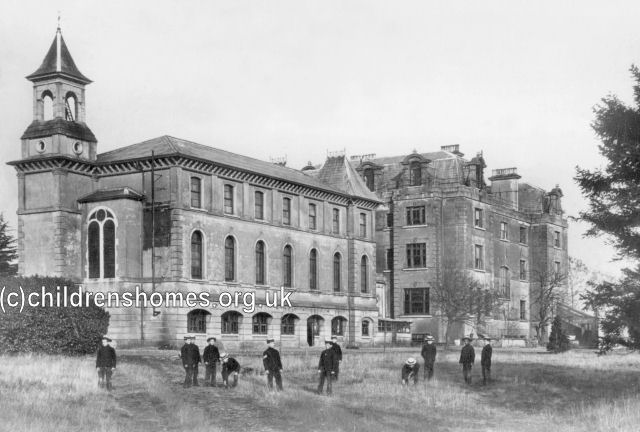
Royal Albert Orphanage, Bagshot, from the south-west, date unknown © Peter Higginbotham
A flavour of life at the Orphanage is given by the following collection of pictures. Their date is unknown but are perhaps from the 1930s.
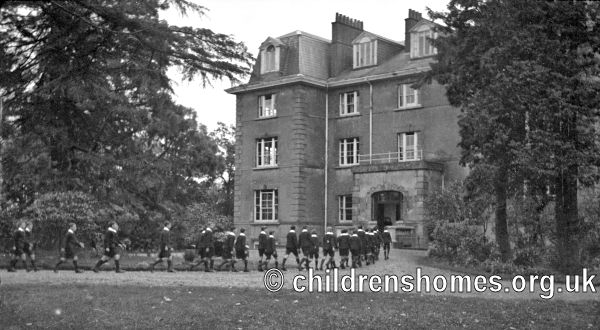
Boys approaching front door, Royal Albert Orphanage, Bagshot, 1930s? © Peter Higginbotham
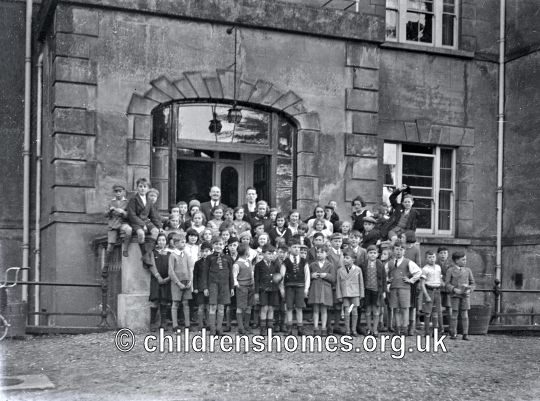
Boys and staff, Royal Albert Orphanage, Bagshot, 1930s? © Peter Higginbotham
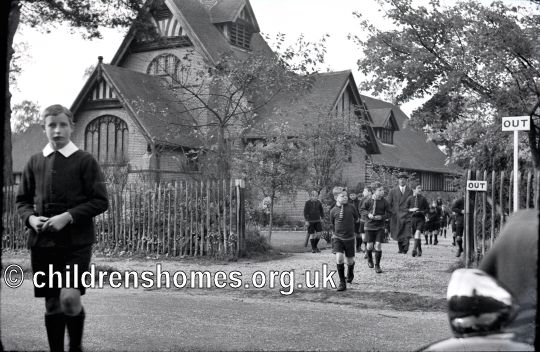
Coming from church, Royal Albert Orphanage, Bagshot, 1930s? © Peter Higginbotham

Dining room, Royal Albert Orphanage, Bagshot, 1930s? © Peter Higginbotham
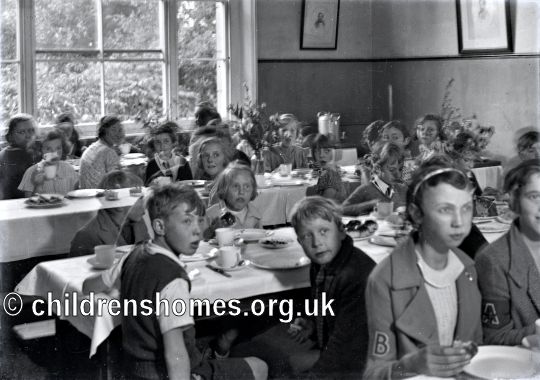
Dining room, Royal Albert Orphanage, Bagshot, 1930s? © Peter Higginbotham
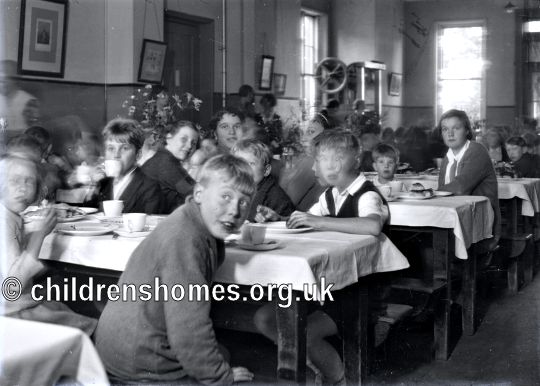
Dining room, Royal Albert Orphanage, Bagshot, 1930s? © Peter Higginbotham
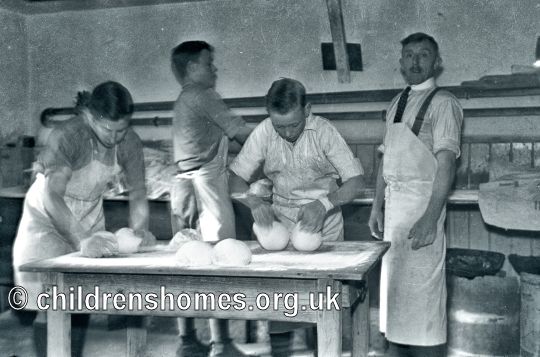
Baking bread, Royal Albert Orphanage, Bagshot, 1930s? © Peter Higginbotham
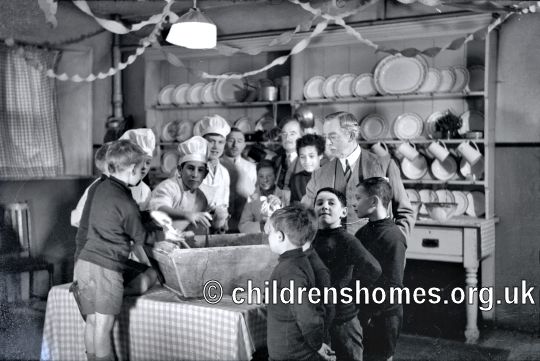
Mixing a cake, Royal Albert Orphanage, Bagshot, 1930s? © Peter Higginbotham

Mixing a cake, Royal Albert Orphanage, Bagshot, 1930s? © Peter Higginbotham

Farm work, Royal Albert Orphanage, Bagshot, 1930s? © Peter Higginbotham
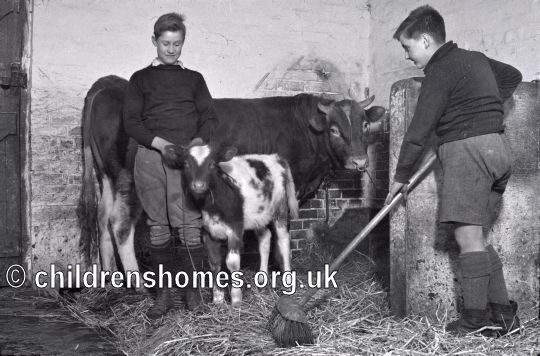
Farm work, Royal Albert Orphanage, Bagshot, 1930s? © Peter Higginbotham
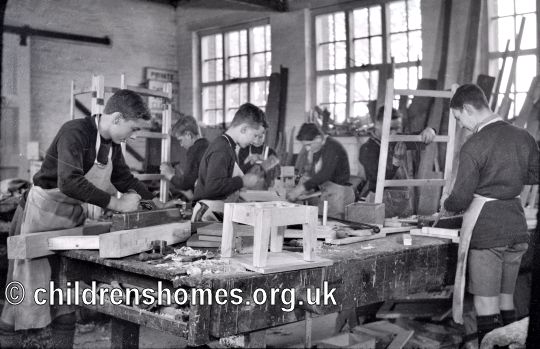
Boys' woodwork, Royal Albert Orphanage, Bagshot, 1930s? © Peter Higginbotham
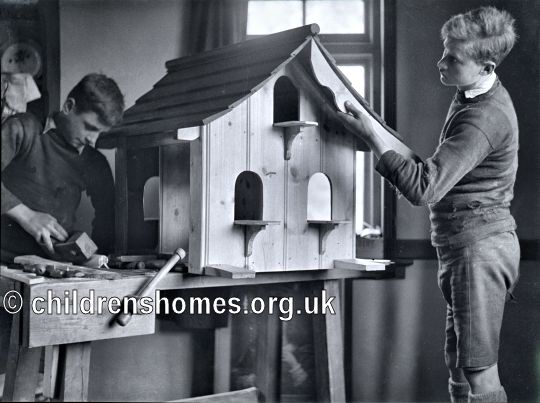
Boys' woodwork, Royal Albert Orphanage, Bagshot, 1930s? © Peter Higginbotham

Hair cutting, Royal Albert Orphanage, Bagshot, 1930s? © Peter Higginbotham
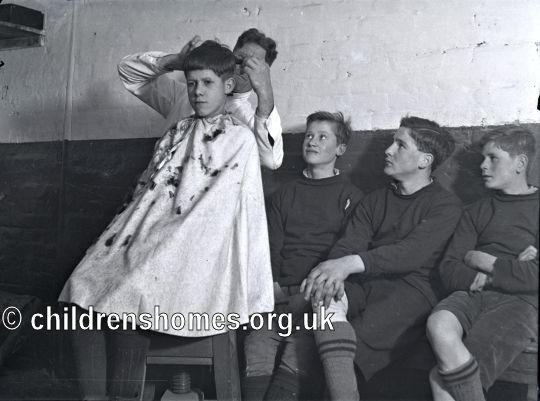
Hair cutting, Royal Albert Orphanage, Bagshot, 1930s? © Peter Higginbotham
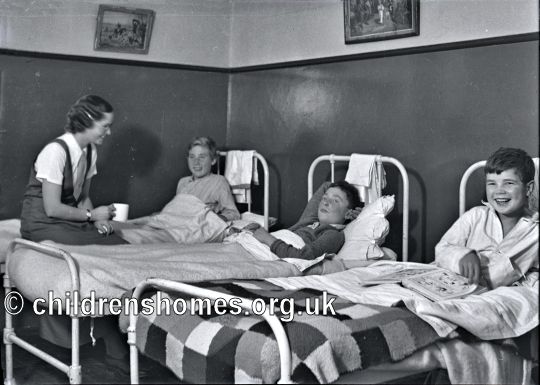
Boys' dormitory, Royal Albert Orphanage, Bagshot, 1930s? © Peter Higginbotham
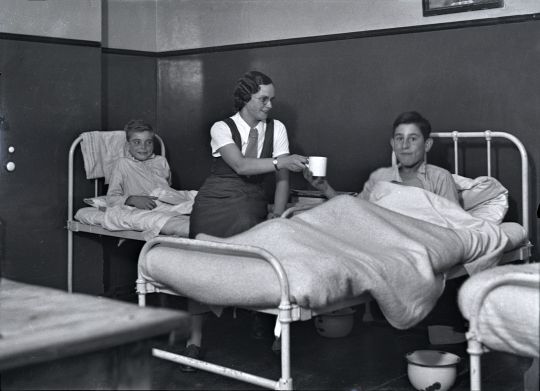
Boys' dormitory, Royal Albert Orphanage, Bagshot, 1930s? © Peter Higginbotham
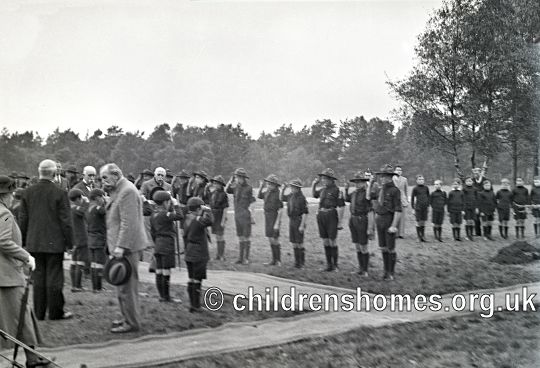
Boy Scouts and Wolf Cubs, Royal Albert Orphanage, Bagshot, 1930s? © Peter Higginbotham
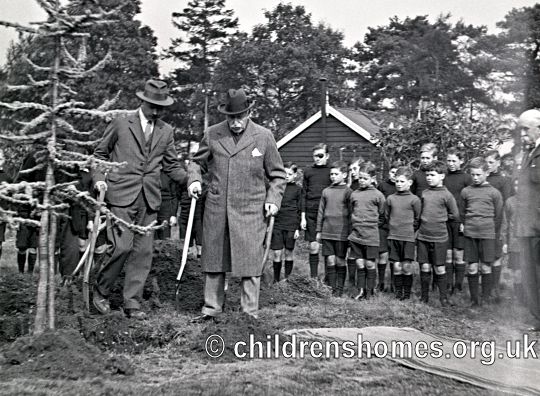
Tree planting, Royal Albert Orphanage, Bagshot, 1930s? © Peter Higginbotham
In 1942, at the height of the Second World War, the charity's main objective was redefined as: 'To provide a home, free from cost, or where circumstances permit, upon very reduced terms, for sons of men who have died or been killed in the armed services of the Crown, in air raids, civil defence or in war production, and orphans and boys for whom special conditions make it desirable that a home should be found.' At around the same time, the Orphanage was renamed the Royal Albert School.
In 1948, largely due to financial pressures, a merger was agreed between the School and the Royal Alexandra School, formerly based in Hampstead, but then in temporary wartime accommodation. The new institution was to be known as the Royal Alexandra and Albert School. The charity's aim was now to 'establish and maintain a boarding school for boys and girls who without one or both parents or whose special circumstances make it desirable that they should go to a boarding school.' The new School was based at Gatton Park, Reigate, in Surrey, where it still continues in operation today.
The Bagshot premises were subsequently demolished and the site occupied by a college for the Women's Royal Army Corps. Modern housing now occupies the whole area.
Records
Note: many repositories impose a closure period of up to 100 years for records identifying individuals. Before travelling a long distance, always check that the records you want to consult will be available.
- Surrey History Centre, 130 Goldsworth Road, Woking, Surrey GU21 6ND. Holds the archives of the Orphan Working School, Alexandra Orphanage, Royal Albert Orphan Asylum, and Royal Alexandra School. Pupil records include Admission registers, School ledgers, Examination books, Medical records, Address books, Attendance records, etc. An online catalogue is available. A 100-year closure restriction applies to some records.
Bibliography
- Higginbotham, Peter Children's Homes: A History of Institutional Care for Britain s Young (2017, Pen & Sword)
Links
Except where indicated, this page () © Peter Higginbotham. Contents may not be reproduced without permission.


